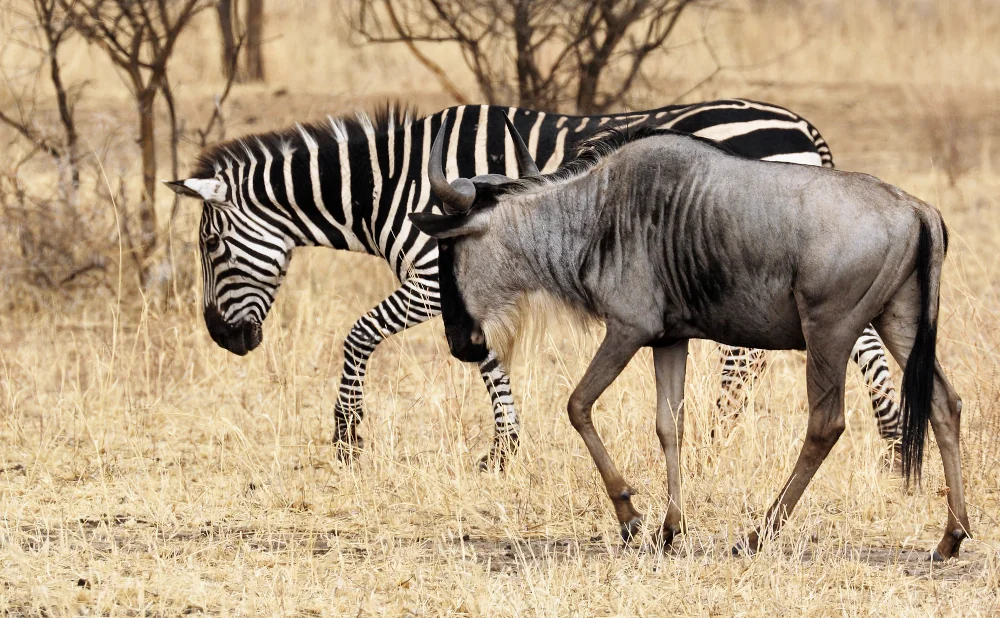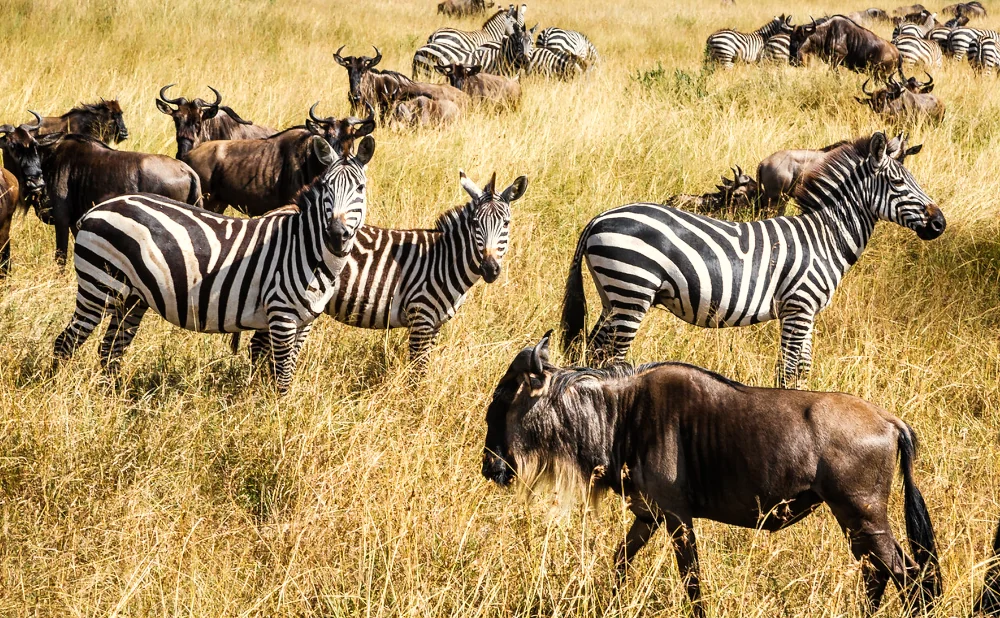Understanding Ethnic Diversity in Tanzania
Tanzania, a country in East Africa, is a vibrant tapestry of cultures. It is home to over 120 distinct ethnic groups, each with its unique traditions, languages, and social structures.
This rich ethnic diversity is a result of historical migrations and interactions. The Bantu, Nilotic, and Cushitic migrations have all played a significant role in shaping the country's cultural landscape.
The Sukuma, the largest tribe, and the internationally recognized Maasai are just two examples. There are also the Chagga, known for their agricultural expertise, and the Hadzabe, one of the last hunter-gatherer societies in the world.
Despite this diversity, Tanzania has largely avoided the ethnic conflicts that have plagued other African nations. The national language, Swahili, serves as a lingua franca, fostering unity among the various ethnic groups.
However, understanding Tanzania's ethnic diversity involves more than just recognizing the different tribes. It requires an appreciation of the social, economic, and political roles these ethnic groups play in Tanzanian society.
In this article, we delve into the rich tapestry of Tanzania's ethnic diversity. We explore the historical context, major ethnic groups, language dynamics, cultural practices, and the role of ethnicity in Tanzanian society. Join us on this fascinating journey to better understand the vibrant ethnic diversity of Tanzania.
The Historical Context of Ethnic Diversity in Tanzania
The ethnic diversity in Tanzania is deeply rooted in the country's history. It is a product of centuries of migrations, interactions, and adaptations. These historical processes have shaped the cultural, linguistic, and social landscapes of Tanzania.
The Bantu migrations, which began around 2000 BC, brought a large number of ethnic groups to Tanzania. These groups, including the Sukuma and the Chagga, brought with them advanced farming techniques and ironworking skills. They established complex societies and kingdoms, leaving a lasting impact on the region.
The Nilotic migrations, which occurred in several waves from around 1000 AD, introduced pastoralist groups like the Maasai and the Barabaig. These groups, known for their warrior traditions and cattle herding, added another layer to Tanzania's ethnic tapestry.
The Cushitic migrations, although less extensive, brought groups like the Iraqw and the Mbulu. These groups, with their unique agricultural systems and terracing techniques, have also contributed to the ethnic diversity of Tanzania.
Understanding these historical migrations is crucial to appreciating the ethnic diversity in Tanzania. They provide the context for the cultural, linguistic, and social diversity that characterizes the country today.
Bantu, Nilotic, and Cushitic Migrations
The Bantu migrations were a significant event in Africa's history. Originating from West Africa, the Bantu people spread across the continent, bringing with them new technologies and languages. In Tanzania, they became the largest linguistic group, influencing the culture and society of the region.
The Nilotic migrations brought pastoralist groups from the Nile Valley to East Africa. These groups, including the Maasai and the Luo, are known for their distinctive social structures, warrior traditions, and reliance on cattle herding. Their arrival added a new dimension to Tanzania's ethnic diversity.
The Cushitic migrations, although smaller in scale, had a significant impact on the northern and central regions of Tanzania. The Iraqw and the Mbulu, both Cushitic-speaking groups, are known for their unique agricultural systems and terracing techniques. Their presence further enriched the ethnic tapestry of Tanzania.
Major Ethnic Groups in Tanzania
Tanzania is home to over 120 ethnic groups, each with its unique culture, language, and social structure. This rich diversity is a testament to the country's historical migrations and interactions.
The Sukuma, Maasai, Chagga, Hadzabe, and Sandawe are among the most recognized tribes. Each of these tribes contributes to the vibrant tapestry of Tanzanian culture.
The Sukuma: Tanzania's Largest Tribe
The Sukuma, meaning "north people," are the largest ethnic group in Tanzania. They are primarily located in the northwestern part of the country, in the regions of Mwanza and Shinyanga.
The Sukuma are traditionally agriculturalists, known for their cultivation of cotton, tobacco, and rice. They also rear livestock, including cattle, goats, and sheep.
""
The Maasai: A Symbol of Tanzanian Culture
The Maasai are one of the most internationally recognized tribes from Tanzania. Known for their distinctive red shuka (cloth), beaded jewelry, and warrior traditions, they have become a symbol of Tanzanian culture.
Despite modern influences, the Maasai have largely maintained their traditional pastoralist lifestyle. They are known for their strong social structures, centered around age-sets and warriorhood.
""
The Chagga: Agriculturalists of Kilimanjaro
The Chagga people reside on the slopes of Mount Kilimanjaro, Africa's highest peak. They are known for their agricultural expertise, particularly in the cultivation of bananas and coffee.
The Chagga have a rich history of kingdoms and chieftaincies. Their complex irrigation systems and terracing techniques are a testament to their advanced agricultural practices.
""
The Hadzabe and Sandawe: Preserving Ancient Traditions
The Hadzabe and Sandawe tribes are among the last hunter-gatherer societies in the world. They reside in the central and northern parts of Tanzania, living off the land through hunting and gathering.
The Hadzabe are known for their click language, similar to that of Southern Africa's Khoisan groups. The Sandawe, although culturally distinct, also speak a click language, indicating ancient ties to the Khoisan.
""
Language and Unity in Diversity
In the midst of this ethnic diversity, language plays a crucial role in fostering unity. Tanzania's national language, Swahili, acts as a lingua franca, bridging the communication gap among different ethnic groups.
Swahili, also known as Kiswahili, is a Bantu language with significant Arabic influences. It is spoken by most Tanzanians, either as a first or second language.
Despite the widespread use of Swahili, many Tanzanians also speak their ethnic languages. This multilingualism is a reflection of the country's rich cultural diversity.
Swahili as the Lingua Franca
Swahili's role as the lingua franca in Tanzania cannot be overstated. It is not only the national language but also the medium of instruction in schools and the language of government and media.
This widespread use of Swahili has played a significant role in fostering national unity. It has helped to blur ethnic distinctions, promoting a sense of Tanzanian identity that transcends tribal affiliations.
Cultural Practices and Social Structures
Tanzania's ethnic diversity is not only reflected in languages but also in cultural practices and social structures. Each ethnic group has its unique customs, traditions, and social organization.
These cultural practices and social structures play a significant role in shaping the Tanzanian society. They influence everything from family life and community relations to economic activities and political organization.
Traditional Customs and Modern Influences
Despite the pressures of modernization and globalization, many Tanzanian ethnic groups have managed to preserve their traditional customs. These include rites of passage, religious ceremonies, music, dance, and art.
However, modern influences are also evident. For instance, traditional music and dance have been incorporated into modern Tanzanian pop culture, creating a unique blend of old and new.
The challenge for Tanzania, like many other culturally diverse countries, is to balance the preservation of traditional customs with the demands of modern life. This is a delicate balancing act, but one that is crucial for the survival of the country's rich cultural heritage.
The Role of Ethnic Diversity in Tanzanian Society
Ethnic diversity plays a significant role in Tanzanian society. It shapes the country's social, political, and economic landscape.
Each ethnic group contributes to the richness of Tanzanian culture. They bring unique perspectives, traditions, and knowledge that enrich the national identity.
Ethnicity and Politics: The Concept of 'Ujamaa'
In politics, the concept of 'Ujamaa' or African socialism, introduced by Julius Nyerere, emphasized unity among ethnic groups. This policy aimed to foster a sense of national identity and social cohesion.
Despite ethnic diversity, Tanzania has managed to maintain relative peace and stability. This is largely attributed to the 'Ujamaa' policy and the use of Swahili as a national language.
Economic Contributions of Ethnic Groups
Ethnic groups also contribute significantly to Tanzania's economy. Each group has specific skills and knowledge related to agriculture, fishing, livestock rearing, and other economic activities.
For instance, the Chagga people's expertise in agriculture contributes to the country's food security. Similarly, the Maasai's knowledge of livestock rearing is crucial for the meat and dairy industry.
Challenges and Preservation of Ethnic Diversity
Despite the richness of ethnic diversity, Tanzania faces challenges in preserving its cultural heritage. Modernization and globalization pose threats to traditional lifestyles and practices.
Yet, the Tanzanian government recognizes the importance of preserving ethnic diversity. It promotes cultural festivals and tourism to celebrate and preserve the country's diverse heritage.
Globalization and the Future of Ethnic Traditions
Globalization brings both opportunities and challenges for ethnic traditions. While it opens avenues for cultural exchange, it can also lead to the erosion of traditional practices.
The impact of globalization on traditional ethnic lifestyles is a complex issue. It requires a balanced approach to ensure the preservation of cultural heritage while embracing modernity.
The Role of Education and Cultural Institutions
Education plays a crucial role in promoting understanding and appreciation of ethnic diversity. Schools and universities are platforms where students learn about the country's rich cultural heritage.
Cultural institutions like museums also play a significant role. They showcase the diversity of Tanzanian ethnic groups, helping to preserve and promote the country's cultural heritage.
Embracing Diversity for a Unified Tanzania
Understanding ethnic diversity in Tanzania is key to appreciating the country's rich cultural heritage. It's a tapestry woven from the threads of over 120 distinct ethnic groups, each contributing to the vibrant social fabric.
Embracing this diversity is crucial for a unified Tanzania. It fosters social cohesion, enriches cultural expression, and drives innovation. As Tanzania moves forward, it carries the strength of its diverse heritage, shaping a future that honors its past.











